Tag Archives: FishNet USA
Glass fibers – the rest of the story????? by Nils E. Stolpe/FishNet-USA
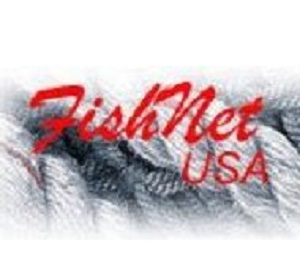 Floating around (sorry!) is the surprising story that the fiberglass that is being donated gratis to our oceans by the offshore wind industry is harmless because the fibers that make it up are chemically inert. Reassuring, isn’t it? Well, in words made immortal by George and Irwin Gershwin in Porgy and Bess, “it ain’t necessarily so.” To put those immortal words in the proper real world (not NOAA or BOEM scientist’s) perspective, the asbestos fibers that are still being used legally in a whole bunch of manufacturing processes today are chemically inert on their own. You can chomp on and swallow asbestos fibers to your heart’s content, as long as they stay in large chunks, with no ill effects. According to the National Library of Medicine “asbestos fibers are basically chemically inert, or nearly so. They do not evaporate, dissolve, burn, or undergo significant reactions with most chemicals.” So what happens when a huge fiberglass rotor on an offshore generator (300+ feet long and still enlarging as wind generators become larger-and more efficient) delaminates and takes a dive into one of our oceans? more, >>CLICK TO READ<< 15:52
Floating around (sorry!) is the surprising story that the fiberglass that is being donated gratis to our oceans by the offshore wind industry is harmless because the fibers that make it up are chemically inert. Reassuring, isn’t it? Well, in words made immortal by George and Irwin Gershwin in Porgy and Bess, “it ain’t necessarily so.” To put those immortal words in the proper real world (not NOAA or BOEM scientist’s) perspective, the asbestos fibers that are still being used legally in a whole bunch of manufacturing processes today are chemically inert on their own. You can chomp on and swallow asbestos fibers to your heart’s content, as long as they stay in large chunks, with no ill effects. According to the National Library of Medicine “asbestos fibers are basically chemically inert, or nearly so. They do not evaporate, dissolve, burn, or undergo significant reactions with most chemicals.” So what happens when a huge fiberglass rotor on an offshore generator (300+ feet long and still enlarging as wind generators become larger-and more efficient) delaminates and takes a dive into one of our oceans? more, >>CLICK TO READ<< 15:52
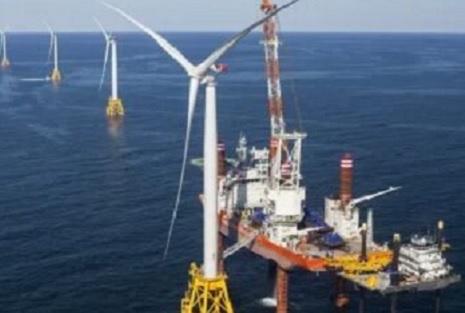
Where have all the dead whales gone? By Nils Stolpe, FishNet-USA
Beginning in December of last year and extending through most of the first quarter of 2023, New Jersey and New York beaches were inundated with abnormally high numbers of dead or dying whales and smaller marine mammals. These majestic creatures-though not so majestic when being pushed about willy-nilly by tides, wind, waves and various types of earth moving machines-have never expired in such large numbers in such publicly accessible locations in local residents’ memories. Perhaps coincidently, intensive hydroacoustic surveys to determine the suitability of potential sites for the construction of thousands of gigantic windmills and their supporting infrastructure (supposedly to help us all survive what is being sold as an imminent energy/climate crisis) were being committed offshore of the beaches where all of these marine mammal deaths and strandings have been concentrated. To us inveterate observers of that hunk of Atlantic Ocean real estate known as the New York Bight, and the critters that temporarily or permanently live there, and of the actions of the public agencies charged with-and entitled to tens of millions of taxpayer dollars each year to do so-administering the Endangered Species and the Marine Mammal Protection Acts, that surely hints at, at best, ineptitude at that’s ineptitude at a fairly advanced level. >click to read the article< 16:14

North Carolina Sports target commercial fisheries – example #3 in 2022

Looking Back: Nov.7, 1998 – “Conflict of interest, and fishery management”, By Nils Stolpe
This Looking Back features Nil’s insightful research into the funding source of fishery management bodies in the USA. This article was written in 1998, and the funding sources are still the same, although the monetary amounts are certainly different now. In light of the recent ASMFC /MAFMC allocation steal, covered in dec 20th posting on Fisherynation by Jim Lovgren, [who mistakenly stated that the management funding was by SK money, which is an import-based tax, it is actually Wallop-Breaux funding which is the tax on recreational gear and fuel]. This issue needs to see the light of day again, the conflict is clear, and now they’re using bad science against us. >click to read< 18:35

How Valuable Is FishNet-USA?
The question should actually be “how much is FishNet USA worth to you?” I’ve been writing stuff for the commercial fishing industry for over three decades. That’s a lot of words, and I suspect that no one who is on the present distribution list, who has read my columns in National Fishermen or on Saving Seafood, or has FishNet issues forwarded to them from someone on the list has not benefitted from some of them. Thanks to the Covid mess, and also thanks to what seemed to me to be some philosophical differences between me and some prior sponsors who were part of a commercial fishing consortium that was trying to get into the windmill business, my industry support has dwindled down to the point where the funds coming in just about cover my internet/telecommunications costs. Unlike just about all of our domestic fisheries, this is not sustainable. >click to read< By Nils Stolpe 16:26

Wind farms: Where are all of the ocean saviors?
The precautionary principle has deep roots finding expression in sayings such as ‘an ounce of prevention is worth a pound of cure’ or ‘better safe than sorry’. The use of the precautionary principle in ecosystem management is especially important,,, Repeated failures of management highlighted by the collapse of northern cod off Canada, the California sardine fishery, and herring, sandeels, blue whiting and capelin stocks in the North Sea have demonstrated the need for this approach in order to help address scientific uncertainty. Yet when it comes to protecting huge swaths of ocean,,, Clog 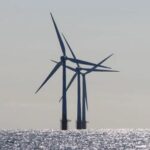 our near shore and offshore waters with hulking (approaching 1,000 feet tall today, who knows what’s in store for tomorrow?) structures supporting huge rotors with tips moving through the air at velocities approaching 200 miles per hour? So what? Festoon our sea beds with electrical cables carrying huge amounts of electricity, And what of undersea server farms,,, >click to read< 15:43 Nils E. Stolpe/FishNet USA. © 2021 Nils E. Stolpe, July 31
our near shore and offshore waters with hulking (approaching 1,000 feet tall today, who knows what’s in store for tomorrow?) structures supporting huge rotors with tips moving through the air at velocities approaching 200 miles per hour? So what? Festoon our sea beds with electrical cables carrying huge amounts of electricity, And what of undersea server farms,,, >click to read< 15:43 Nils E. Stolpe/FishNet USA. © 2021 Nils E. Stolpe, July 31

Offshore Wind Farms : We’re from the government and we’re here to _______ you!
It is just another example of the commercial fishing industry being “thrown under the bus” for the benefit of more politically powerful interests-in this case the wind energy industry and the political support that has been generated by it. But then again, perhaps not. Gina McCarthy, described as the Biden Administration’s “Climate Czar” (actually the first-ever climate advisor) “said the administration already took those complaints.” These are the comments RODA and various other folks and organizations made on the COP which were never addressed. “McCarthy said offshore wind is emerging as an even more important linchpin of the Biden administration’s clean energy strategy than had originally been expected. There are about 16 projects currently in the pipeline,,, >click to read< 15:52

Nils E. Stolpe/FishnetUSA – NOAA Fisheries Coronavirus (COVID-19) Update
Well, first we have this reassuring (at least if you’re not that familiar with the capacity of NOAA Fisheries to get it really, really wrong!) statement that “NOAA Fisheries is actively monitoring and adjusting to the COVID-19 national health crisis”. Nothing to worry about, right? Well, not quite nothing. While I’ve seen nothing official, word on (at least some of the New Jersey) docks is that, in spite of the ongoing and very possibly worsening national Covid-19 health crisis, the mandatory on-board observers are back in force and demanding rides.,, It seems like just about anything that might involve NOAA/NMFS employee exposure to Covid-19 has either been cancelled or public participation has been severely restricted or eliminated. >Click to read<17:12

Looking Back with FishNetUSA: The case for Bureaucratic Monitoring Systems (BMSs)
A good friend of mine is a New Jersey gillnetter. An acknowledged highliner, he’s served and continues to serve on several state and regional advisory committees, has always participated in the management process, and has never received a NOVA or been convicted of violating any federal or state fisheries regulations. One requires that he have a Vessel Monitoring System (VMS) operating 24 hours a day, 7 days a week, 52 weeks a year.,, This got me thinking, and one of the things it got me thinking about was all of those bureaucrats paid from the U.S. Treasury.,, So why isn’t the wearing, or perhaps implantation if that is a practical alternative, of Bureaucrat Monitoring Systems (BMSs), required as a condition of public employment? >click to read< 13:19
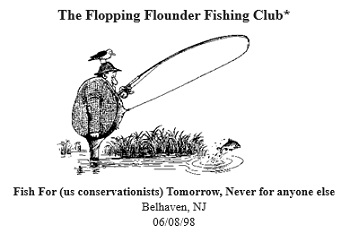
Looking Back at FishNet USA – “New Conservationists” and the Flopping Flounder Fishing Club
In these days of seemingly unrelenting grim news I thought I’d try to lighten the atmosphere somewhat by sharing with you what I consider possibly entertaining piece I wrote and distributed twenty years ago. For those unfamiliar with Mid-Atlantic fisheries management, the striped bass (Morone saxatilis) fishery is managed by a per-state quota, and each states’ quota is divided into commercial and recreational components. Way back when the New Jersey Legislature passed a bill which made it illegal to sell striped bass so the commercial quota was added onto the recreational quota. The commercial was never – and still isn’t – very large, but the unfairness of the law and the fact that it on occasion it necessitates the over-the-side disposal of what would (should?) be perfectly saleable striped bass bycatch grates on a whole lot of commercial fishermen. Please stay safe and healthy, Nils >click to read< 11:38
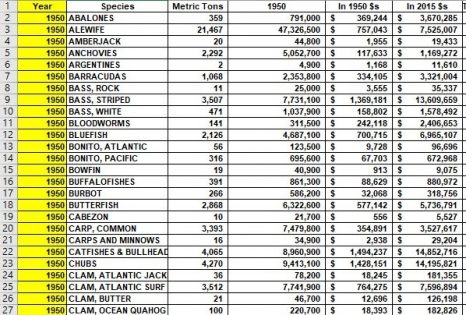
Commercial Fishing in the U.S. Exclusive Economic Zone – What was being caught and where back to 1950
What is the status of commercial fishing in the U.S. Exclusive Economic Zone, the waters from 3 to 200 miles off our coastline? Generally speaking – something that the “bureaucrats in charge” have developed a great deal of facility in doing – it’s pretty good. Since the National Marine Fisheries Service started getting serious about tracking commercial landings (or at making those landings readily accessible) in 1950, the total weight of our domestic landings has increased from 4.9 billion to 9.8 billion pounds. The value of those landings, when corrected for inflation, has increased from $3.3 billion to $5.2 billion, almost as good. Nils E. Stolpe/FishNet USA >click to read<17:03
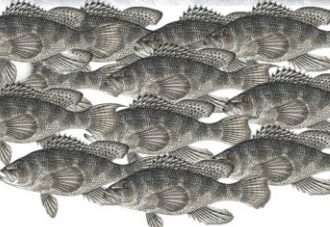
FishNet-USA – What do you do with it?
A message from Nils Stolpe – I know that a lot of commercial fishing industry people receive FishNet-USA, but I don’t have a solid handle on what gets done with it after it’s received. I hope that you all read it. I know that some of you do because I’ll get an email or two after every issue complimenting me on it, but I don’t have much of an idea what happens after that. Accordingly I’ve put this note together to let you know what I think you should do with it after you read it – assuming that you agree with at least some of what I’ve written, and that you’d like to have other folks read it. click here to read the recommendations 08:25 
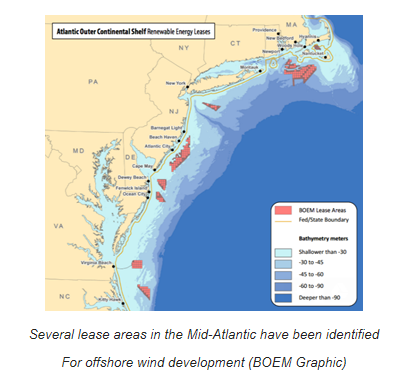
EMF (Electromagnetic Field) Effects and the Precautionary Principle – Nils E. Stolpe/FishNet USA
The following is taken from an OSPAR Commission (https://www.ospar.org/) report from 2008. It clearly shows that at the time when interest in offshore wind turbines was really starting to grow there was very little knowledge of, nor had much significant research been done on, the effects of electromagnetic fields on marine or estuarine species, and what little had been done was on mature organisms, with little or no attention given to immature stages. Background Document on potential problems associated with power cables other than those for oil and gas activities: Conclusions in regard to electromagnetic fields Our current knowledge about effects of electromagnetic fields on the marine environment, in particular fauna, is not sufficient. Only a few preliminary conclusions can be reached. click here to read the article 17:07
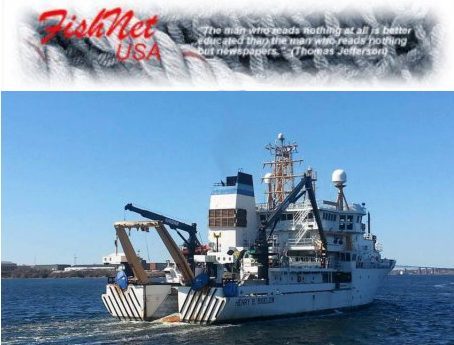
Trawl Surveys, what are they good for? – Nils E. Stolpe/FishNet USA
(Note that I am only addressing the NOAA/NMFS reliance on bottom trawl survey data in finfish stock assessments. I am not questioning the value of the wealth of biological and physical data that this long – running series of surveys generate.) From the article: According to NOAA/NMFS these surveys have provided and continue to provide “the primary scientific data” for fisheries assessments from North Carolina to Maine (fisheries assessments are the periodic – generally held every 3 to 5 years – scientific/bureaucratic exercises. In NOAA’s words “NOAA Fisheries’ scientific stock assessments are critical to modern fisheries management. Using data gathered from commercial and recreational fishermen and our own on-the-water scientific observations, a stock assessment describes the past and current status of a fish population or stock, answers questions about the size of the stock, and makes predictions about how a fishery will respond to current and future management measures.”) click here to read the article 12:35
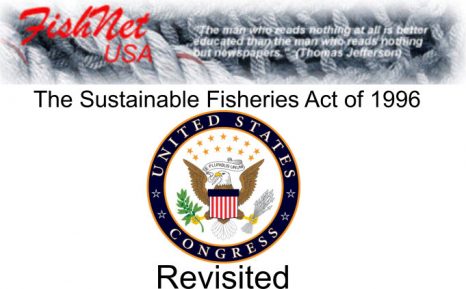
The Sustainable Fisheries Act – January 11, 2000 Revisited
I’ve been reviewing my past writings to gauge which, if any, have aged gracefully and which haven’t. I’ll be redistributing those that I think were particularly noteworthy, either because they were – and perhaps still are – on target or because they weren’t – or aren’t. The following addresses some of the more onerous provisions of the Sustainable Fisheries Act of 1996, which at the time were being fully implemented. I’ll leave it up to you to determine whether I hit this nail on the head or not. I’d be really interested to hear what you think. Nils Stolpe. From the article: Under the provisions of the federal Sustainable Fisheries Act (SFA), at any point when the populations of each of these competing species aren’t at MSY they are considered to be “overfished” and stringent harvest restrictions implementing strict rebuilding schedules (to MSY) are mandated. By requiring that all species be at their MSY, our coastal waters are expected in the SFA to support a level of overall production that is ecologically impossible, and fishermen, both recreational and commercial, are expected to reduce their catch to meet this impossible standard. Continue reading the article here 14:45
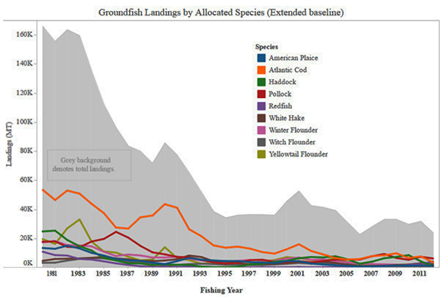
Fishery Mismanagement: FishNet USA – Choking on good(?) intentions
From the article: We have fisheries that are on the verge of collapse while the fish stocks that support them are healthy. There is a wanton disregard for the health of the businesses that depend of fishing, a disregard that wasn’t really there until the environmental community, funded by a handful of “charitable” mega-foundations (including the Gordon and Betty Moore Foundation), started to interfere in the federal fishery management process. Having healthy fish stocks, their supposed goal, is meaningless without healthy businesses benefitting from the utilization of those stocks. Today the economic effects of management actions on fishing and fishing dependent businesses are at best given lip service; the only thing that really matters when management decisions are considered is whether or not “overfishing” will be ended. The argument for the almost total focus on the health of the stocks, a concept that is exemplified by the above four sources of uncertainty from a study that was paid for – surprise, surprise! – by one of the mega-foundation that has spent many millions of dollars on “fixing” fisheries, is that healthy fish stocks are supposed to mean healthy fisheries. The present condition of the New England groundfish fishery shows how wrong that supposition is. Read the full article, click here 11:41
I.U.U. Fishing/The latest supposed ocean crisis/All the news that’s fit to print?
 Nils Stolpe/FishNet USA – Over the past several years there has been much discussion, debate, posturing, misrepresentation, exaggeration and incipient empire building on and around the subject of illegal, unreported and unregulated (IUU) fishing. Most of this has been driven by ENGOs and the mega-foundations that support them because they have all of these fish saviors on the payroll with, since the demise of overfishing, not an awful lot to do. Not surprisingly the Obama administration has been complicit in this. Starting out with a point of clarification, IUU fishing is, or should be, a concern in some areas of the world’s oceans – but for reasons that I’ll get to an a bit, it isn’t, or shouldn’t be, in the U.S. Exclusive Economic Zone (EEZ). In spite of this you can bet dollars to donuts that that’s where all of the ENGOs will be focusing their IUU efforts, because it’s a lot more comfortable, convenient and safe to assault domestic fishermen from their cushy digs in Philadelphia or Washington DC than from some tropical or sub-tropical Hell hole where most of the IUU activity is based. And, I’m sure the feeling in those cushy digs in Philadelphia and Washington is that the public and the pols aren’t sophisticated enough to realize this, and in all likelihood – thanks to the mega-million dollar PR juggernaut that is backstopping their efforts – never will be. To read the complete article, click here 15:15
Nils Stolpe/FishNet USA – Over the past several years there has been much discussion, debate, posturing, misrepresentation, exaggeration and incipient empire building on and around the subject of illegal, unreported and unregulated (IUU) fishing. Most of this has been driven by ENGOs and the mega-foundations that support them because they have all of these fish saviors on the payroll with, since the demise of overfishing, not an awful lot to do. Not surprisingly the Obama administration has been complicit in this. Starting out with a point of clarification, IUU fishing is, or should be, a concern in some areas of the world’s oceans – but for reasons that I’ll get to an a bit, it isn’t, or shouldn’t be, in the U.S. Exclusive Economic Zone (EEZ). In spite of this you can bet dollars to donuts that that’s where all of the ENGOs will be focusing their IUU efforts, because it’s a lot more comfortable, convenient and safe to assault domestic fishermen from their cushy digs in Philadelphia or Washington DC than from some tropical or sub-tropical Hell hole where most of the IUU activity is based. And, I’m sure the feeling in those cushy digs in Philadelphia and Washington is that the public and the pols aren’t sophisticated enough to realize this, and in all likelihood – thanks to the mega-million dollar PR juggernaut that is backstopping their efforts – never will be. To read the complete article, click here 15:15
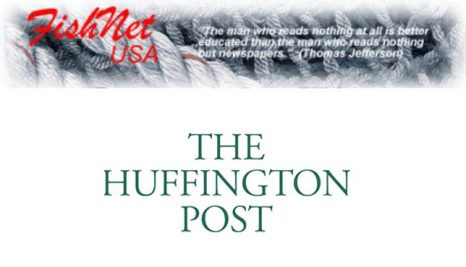
When it comes to fish and fishing Huffington Post is all wet – Nils E. Stolpe/FishNet USA
Last week Dana Ellis Hunnes, a Huffington Post blogger, managed to package in just 700 words more false, misleading, distorted and just plain wrong information about fish and seafood production than I’ve ever seen in works with far more words by professional anti-fishing activists. Addressing her inaccuracies on a point by point basis: Sustainable Fish Do Not Exist – Starting out with her title, the Merriam-Webster definition of sustainable is “able to be used without being completely used up or destroyed, involving methods that do not completely use up or destroy natural resources, able to last or continue for a long time.” The concept of renewable resources revolves around the sustainable utilization of those resources. Click here to read the full article 13:27
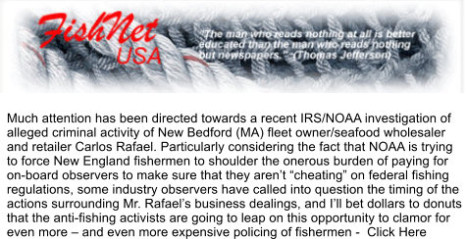
FishNet USA/NOAA Enforcement, media bias, and what’s fact checking?
Much attention has been directed towards a recent IRS/NOAA investigation of alleged criminal activity of New Bedford (MA) fleet owner/seafood wholesaler and retailer Carlos Rafael. Particularly considering the fact that NOAA is trying to force New England fishermen to shoulder the onerous burden of paying for on-board observers to make sure that they aren’t “cheating” on federal fishing regulations, some industry observers have called into question the timing of the actions surrounding Mr. Rafael’s business dealings, and I’ll bet dollars to donuts that the anti-fishing activists are going to leap on this opportunity to clamor for even more – and even more expensive policing of fishermen (it’s been estimated that the costs of the existing level of observer coverage, if passed on to fishermen, will force on the order of 25% of New England’s groundfish fleet out of business).Read the rest of this intro, and, Who really “destroyed a decade of law enforcement?” FishNet USA/December 28, 2011 Nils E. Stolpe Click here16:12
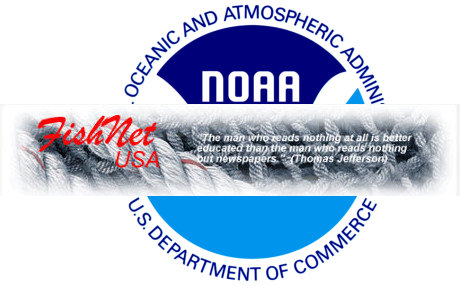
After 39 years of NOAA/NMFS fisheries management, how are they doing? How are we doing because of their efforts?
Nils Stolpe: While it’s called fishery management, it’s not even close – Managing fishing, not fish
“At the global scale, probably the one thing currently having the most impact (on the oceans) is overfishing and destructive fishing gear.” (former National Oceanic and Atmospheric Administration head Jane Lubchenco in an interview on the website Takepart.com on April 7, 2010.) The Deepwater Horizon oil spill catastrophe began on April 20, less than two weeks later. Each year in the U.S. hundreds of millions of tax dollars are spent on what is called fishery management. It’s called fisheries management in the Magnuson-Stevens Fishery Conservation and Management Act. Read the article here 19:14
FishNet USA/Update – So how’s that “catch shares” revolution working out for groundfish?
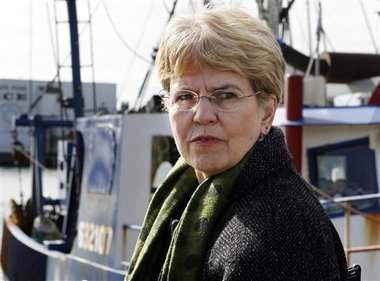 From Nils Stolpe – Alternating with original FishNet USA articles I will be going back to pieces I’ve written (for FishNet and other outlets) over the past 19 years – isn’t it amazing how fast time goes when you’re having fun? – to see how accurate I was in identifying industry trends and predicting what their impacts were going to be. Rather than redistributing the original articles I’ll link to them on the web and try to keep these updates to two pages or under. The original for this update from March, 2014 can be read here Read the rest here. 13:31
From Nils Stolpe – Alternating with original FishNet USA articles I will be going back to pieces I’ve written (for FishNet and other outlets) over the past 19 years – isn’t it amazing how fast time goes when you’re having fun? – to see how accurate I was in identifying industry trends and predicting what their impacts were going to be. Rather than redistributing the original articles I’ll link to them on the web and try to keep these updates to two pages or under. The original for this update from March, 2014 can be read here Read the rest here. 13:31
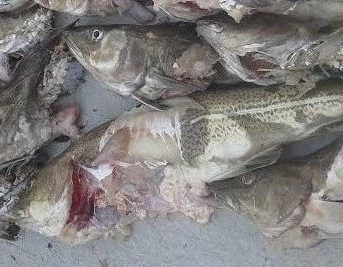
A Must Read! FishNet USA / Dogfish and seals and dolphin, oh my!
The bottom line is that while commercial fishermen from North Carolina to Maine are at work catching on the order of half a million mt of fish and shellfish a year, it appears as if it takes an annual 20,000,000 tons or more to keep all those marine mammals and low-value spiny dogfish and various other predatory fish going. How much of that 20 million tons is commercially/recreationally valuable species or the forage species that sustain them? No one seems awfully interested in finding that out, but they sure should be. Read the rest here 10:55
Your roots are showing – don’t be convinced by seeming grass roots efforts
 Particularly now that the reauthorization of the Magnuson-Stevens Fishery Conservation and Management Act is at hand, much is being made of the supposed grass roots endorsements that are supposed to benefit all of the fishermen who the endorsers claim to be representing. This being the case, I thought it might be useful to examine what “grass roots” really means and to contrast some bona fide grass roots fishing groups with some that, in spite of their billing, might not live up to such a claim. A handful of fishermen and other folks involved in the fishery and one volunteer, a gentleman named Jonathan Gonzalez who started out firmly in favor of “protecting” the oceans from fisherman but after digging into the issues rightfully concluded that these fishermen were the ones who were wearing the white hats and shifted his allegiance, went to Sacramento to attend a hearing on the legislation. Read the rest here 14:00
Particularly now that the reauthorization of the Magnuson-Stevens Fishery Conservation and Management Act is at hand, much is being made of the supposed grass roots endorsements that are supposed to benefit all of the fishermen who the endorsers claim to be representing. This being the case, I thought it might be useful to examine what “grass roots” really means and to contrast some bona fide grass roots fishing groups with some that, in spite of their billing, might not live up to such a claim. A handful of fishermen and other folks involved in the fishery and one volunteer, a gentleman named Jonathan Gonzalez who started out firmly in favor of “protecting” the oceans from fisherman but after digging into the issues rightfully concluded that these fishermen were the ones who were wearing the white hats and shifted his allegiance, went to Sacramento to attend a hearing on the legislation. Read the rest here 14:00
Bluefin tuna and Pew, here we go again! – Nils E. Stolpe, FishNet USA/June 24, 2013
On August 13, 1997 Josh Reichert, then Director of the Pew Trusts Environment Program and now Executive Vice President of the Trusts, in an op-ed column in the Philadelphia Inquirer titled, Swordfish technique depletes the![]() swordfish population wrote “the root problem is not only the ,,,,,,,,,,In what has become typical Pew style, Mr. Reichert’s article was just a small piece of a frightfully well-funded campaign to “save the swordfish” from the depredations of the U.S. pelagic longline fleet. Involving scientists who had been willing riders on the Pew funding gravy train, enlisting restaurateurs into the campaign who hadn’t the foggiest idea what swordfishing or pelagic longlining was all about, and using the formidable Pew media machine,, continued here
swordfish population wrote “the root problem is not only the ,,,,,,,,,,In what has become typical Pew style, Mr. Reichert’s article was just a small piece of a frightfully well-funded campaign to “save the swordfish” from the depredations of the U.S. pelagic longline fleet. Involving scientists who had been willing riders on the Pew funding gravy train, enlisting restaurateurs into the campaign who hadn’t the foggiest idea what swordfishing or pelagic longlining was all about, and using the formidable Pew media machine,, continued here






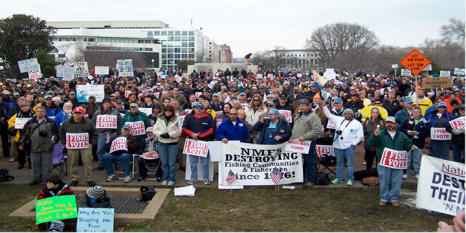

































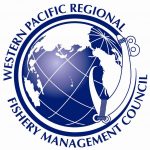
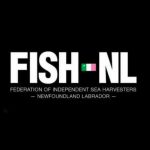
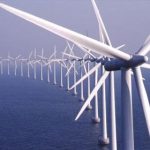

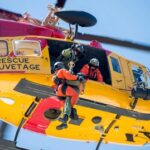
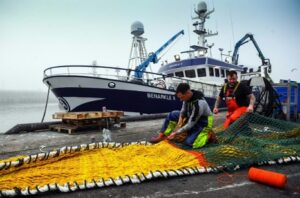
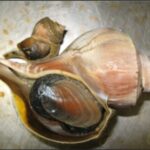
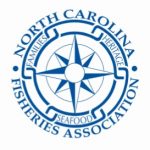




Environmentalism is Dead?
Share this post